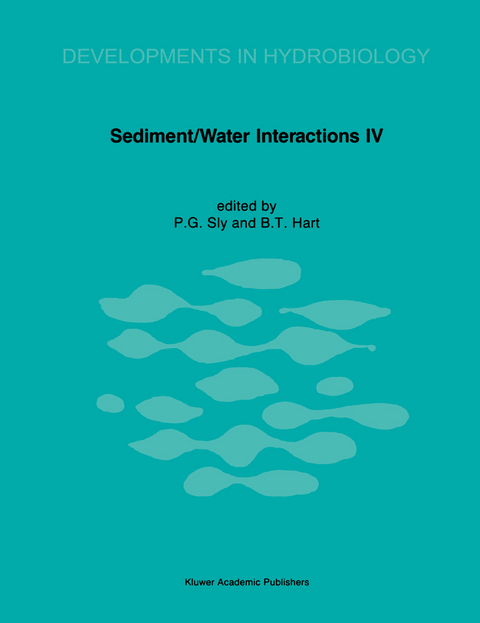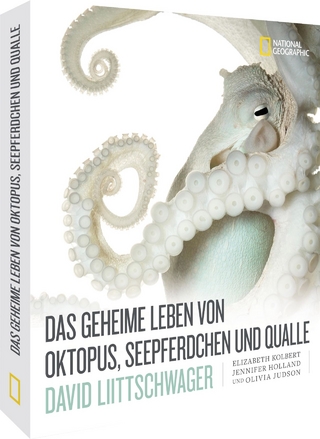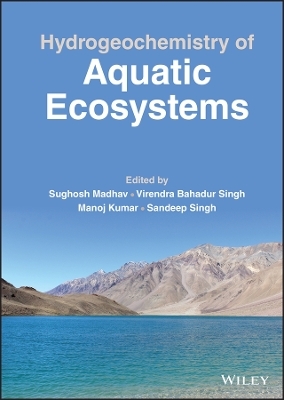
Sediment/Water Interactions
Springer (Verlag)
978-0-7923-0259-9 (ISBN)
Water and water science management.- Social choice, risk and determinism in water quality management.- Problems of organization in the science, politics and management of water.- Habitat changes.- Successional changes in habitat caused by sedimentation in navigation pools.- The effect of low water levels on the water quality of Lake Biwa, Japan.- Sediment dynamics, transport and deposition, and distributions.- The entrainment of sediments by the turbulent flow of water.- Hydro-sedimentology of the Johnstone River estuary, Australia.- Resuspension, ephemeral mud blankets and nitrogen cycling in Laholmsbukten, southeast Kattegat.- Sediment transport in an inland river in north Queensland.- Dynamic characteristics under low flow conditions in the Wakool River, New South Wales.- Sediment dispersion: part I, fine sediments and the significance of the silt/clay ratio.- Sediment dispersion: part II, characterization by size of sand fraction and percent mud.- The particle size characteristics of fluvial suspended sediment: an overview.- Contaminant accumulation, distributions, geochemistry and mineralogy.- Ionic alkyllead compounds in environmental water and sediments.- A study on heavy metal partitioning in sediments from Poyang Lake, China.- An environmental investigation of a marine coastal area: Gulf of Gaeta (Tyrrhenian Sea).- Variability of the heavy metal content of flood deposits (Abstract only).- Heavy metals in eelgrass (Zostera marina L.) during growth and decomposition.- Mercury pollution in Tokuyama Bay, Japan.- Distribution of nutrients, trace elements, PAHs and radionuclides in sediment cores from Lake Varese, Italy.- Nickel sorption and speciation in a marine environment.- The determination of heavy metals in water, suspended materials and sediments from the Langat River, Malaysia.- Trace elements in suspended particulate matter from the Yarra River, Australia.- Geochemical characteristics of heavy metals in the Xiangjiang River, China.- Material cycling.- Importance of sediments in understanding nutrient cyclings in lakes.- Characteristics of settling matter and its role in nutrient cycles in a deep oligotrophic lake.- Trace metal dynamics in a seasonally anoxic lake (Abstract only).- Nutrient remobilisation at the Tiber River mouth, Italy.- Use of radionuclides in the study of contaminant cycling processes.- Seasonal variations in the loosely sorbed phosphorus fraction of the sediment of a shallow and hypereutrophic lake (Abstract only).- Coupling of strontium and calcium cycles in Lake Constance, Switzerland.- Acid rain and lake acidification.- Acid rain and its effects on sediments in lakes and streams.- Concentrations and distribution of Fe, Zn and Cu in tissues of the white sucker (Catostomus commersoni) in relation to elevated levels of metals and low pH.- Microbially mediated reactions and contaminant effects on micbiota.- Microorganisms and the aquatic environment.- Accumulation of poly-?-hydroxybutyrate in a methane-enriched, halogenated, hydrocarbon-degrading soil column: implications for microbial community structure and nutritional status.- Bioavailability and toxic effects.- Can we determine the biological availability of sediment-bound trace elements?.- Sediment toxicity testing in two areas of concern of the Laurentian Great Lakes : Toronto (Ontario) 397 and Toledo (Ohio) Harbours.- Toxicity of metal polluted sediments to Daphnia magna and Tubifex tubifex.- Manipulation and disposal techniques.- Nitrate enhancement of nitrification depth in sediment/water microcosms (Abstract only).- Ceramic processing ofpolluted dredged mud.- Modelling.- A simulation of the process of sedimentation of suspended solids in the Yoshii River estuary, Japan.- The transport of fine-grained sediments in shallow waters (Abstract only).- Methods and analytical techniques.- Uncertainty in description of sediment chemical composition.- Study of metal sorption/desorption processes on competing sediment components with a multi-chamber device (Abstract only).- Sediment sampling evaluated with a new weighting function and index of reliability.- The use of turbidity in suspended sediment research.- Sediment trap assemblages: a methodological description.- Bioavailable metal uptake rate in urban stormwater determined by dialysis with receiving resins.- A sensitive screening bioassay technique for the toxicological assessment of small quantities of contaminated bottom or suspended sediments.- The potential in fluvial geormorphology of a new mineral identification technology (QEM*SEM).- Measurements of sediment toxicity of autotrophic and heterotrophic picoplankton by epifluores-cence microscopy.- A new sampler for collection of interstitial water from sandy sediments.
| Erscheint lt. Verlag | 31.7.1989 |
|---|---|
| Reihe/Serie | Developments in Hydrobiology ; 50 |
| Zusatzinfo | XIV, 533 p. |
| Verlagsort | Dordrecht |
| Sprache | englisch |
| Maße | 210 x 297 mm |
| Themenwelt | Naturwissenschaften ► Biologie ► Limnologie / Meeresbiologie |
| Naturwissenschaften ► Biologie ► Ökologie / Naturschutz | |
| ISBN-10 | 0-7923-0259-1 / 0792302591 |
| ISBN-13 | 978-0-7923-0259-9 / 9780792302599 |
| Zustand | Neuware |
| Haben Sie eine Frage zum Produkt? |
aus dem Bereich


